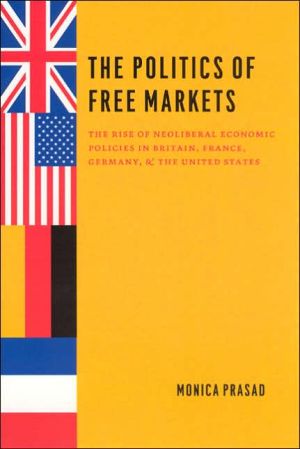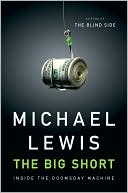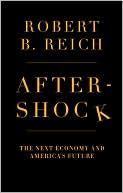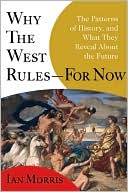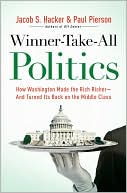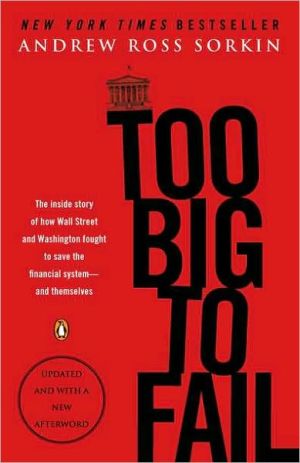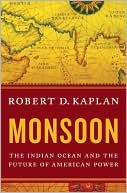The Politics of Free Markets: The Rise of Neoliberal Economic Policies in Britain, France, Germany, and the United States
The attempt to reduce the role of the state in the market through tax cuts, decreases in social spending, deregulation, and privatization—“neoliberalism”—took root in the United States under Ronald Reagan and in Britain under Margaret Thatcher. But why did neoliberal policies gain such prominence in these two countries and not in similarly industrialized Western countries such as France and Germany?\ In The Politics of Free Markets, a comparative-historical analysis of the development of...
Search in google:
The attempt to reduce the role of the state in the market through tax cuts, decreases in social spending, deregulation, and privatization—“neoliberalism”—took root in the United States under Ronald Reagan and in Britain under Margaret Thatcher. But why did neoliberal policies gain such prominence in these two countries and not in similarly industrialized Western countries such as France and Germany?In The Politics of Free Markets, a comparative-historical analysis of the development of neoliberal policies in these four countries, Monica Prasad argues that neoliberalism was made possible in the United States and Britain not because the Left in these countries was too weak, but because it was in some respects too strong. At the time of the oil crisis in the 1970s, American and British tax policies were more punitive to business and the wealthy than the tax policies of France and West Germany; American and British industrial policies were more adversarial to business in key domains; and while the British welfare state was the most redistributive of the four, the French welfare state was the least redistributive. Prasad shows that these adversarial structures in the United States and Britain created opportunities for politicians to find and mobilize dissatisfaction with the status quo, while the more progrowth policies of France and West Germany prevented politicians of the Right from anchoring neoliberalism in electoral dissatisfaction. Political Studies Review "A significant and powerful contribution to an ever-more sophisticated comparative political economy literature. It combines rich empirical detail with sophisticated analysis, skilfully and persuasively illustrating the flaws in some of the alternative accounts."— David Bailey
The Politics of Free Markets \ The Rise of Neoliberal Economic Policies in Britain, France, Germany, and the United States\ \ By MONICA PRASAD THE UNIVERSITY OF CHICAGO PRESS \ Copyright © 2006 The University of Chicago\ All right reserved.\ ISBN: 978-0-226-67902-0\ \ \ \ Chapter One \ Power to the Middle Classes: Entrepreneurs and Ideologues in the Reagan Revolution\ In the early 1980s the administration of President Ronald Reagan passed a series of policies-broad tax cuts, deregulation of industry, and cuts in government programs-to reduce the presence of the state in the market. These policies seemed so significant at the time and were passed in such quick succession that many observers called the episode the "Reagan Revolution." The most consequential policies were passed in a concentrated burst of legislation during the first two years of the administration. After that, for various reasons, the momentum dwindled. The deficits created by the tax cuts forced the administration to raise taxes, deregulation caused a backlash among the public, and other events in the second term, such as the Iran-Contra affair, hampered the administration's ability to make policy. Reagan's immediate successor raised taxes, at great political cost, as did the Democrat Bill Clinton. The single delayed success of the Reagan Revolution was the replacement, in 1996, of Aid to Families with Dependent Children (AFDC; "welfare") by the more time-limitedTemporary Assistance for Needy Families (TANF). The administration of George W. Bush has been quite active in cutting taxes and regulations, leading another neoliberal period.\ In retrospect, it is hard not to see the Reagan Revolution as inevitable, a natural outgrowth of the radical individualism and distrust of government that are supposed to be ingrained in the American character. This sense of inevitability is itself part of Reagan's success. There is indeed some truth to the argument that Reagan's policies intensified trends that had begun before his term, but it is important not to underestimate the context in which Reagan came to office. The economic crisis of the mid-to-late 1970s had led political actors to discuss with some seriousness measures that we would today consider hopelessly radical, such as shortened workweeks, nationalization of key industries, large public works projects, and wage and price controls. In this context, attempting to reduce the size of government was one among many proposals for dealing with the economic crisis.\ Moreover, although Reagan had worked out a general antigovernment credo by the mid 1970s, the specific policies that made up the Reagan Revolution were not formulated until just before and just after Reagan's 1980 victory. A battle raged in the early days of the administration between those who supported the large tax cuts and those who feared the deficits they would produce; the spending cuts were a product of intense and occasionally incoherent political dealing. Nothing in the mid-1970s could have led to a confident prediction of the extensiveness of the changes that took place a few years later.\ This chapter concentrates on that early burst of legislation during the first two years of the Reagan period-the first significant break with the postwar consensus-and particularly on three events: the Economic Recovery Tax Act (ERTA) tax cuts of 1981, which created the deficits; deregulation, particularly at the Environmental Protection Agency (EPA)-the largest regulatory cutbacks in monetary terms; and the implementation of cuts in antipoverty programs (but not in middle-class programs like Social Security) in the Omnibus Budget Reconciliation Act (OBRA) of 1981. I aim to show that the tax cuts were rooted in those elements of the American tax structure that were most progressive (income and property taxes), that business encouraged deregulation, but it could only be implemented because of a strange helping hand from the Left, and that the targeted nature of welfare policy caused it to appear on the agenda. In all three domains, the size or degree of policies was not as important as their shape: visible income and property taxes; adversarial regulations; and targeted welfare policies. In all three domains, entrepreneurial politicians found issues that hit a nerve. Moreover, certain political structures (weak parties, integration of interest groups in politics, lack of a permanent state bureaucracy) increased the quantity of innovations that would be brought onto the agenda, but only those innovations that did not violate majority opinion survived.\ Taxation\ The Economic Recovery Tax Act of 1981 (ERTA) was the largest tax cut in American history; the deficit it produced generated a climate of penny-pinching that was partly responsible for the popularity of cuts in social spending in the 1980s and 1990s. The Reagan administration's later attempts to reduce the deficit did not restore pre-1981 levels of financing, and by the time these later attempts were instituted, the deficit had already ballooned. Herbert Stein calls 1981 the year of the "Big Budget Bang": "Fiscal policy in all the years since ... was dominated by efforts to deal with the consequences of that event" (Stein 1996, 266; see also Stein 1990). The tax increases under George Bush and Bill Clinton eventually brought the budget back into balance, but George W. Bush has reintroduced sustained deficits as a feature of American political life. Approximately 12 percent of the budget went toward interest on debt in 1996 (Brownlee 1996a).\ Two stories circulate about the tax cuts: that business groups were responsible for their passage and that they represented a spontaneous revolt by the majority against excessive taxation. The evidence that the majority of voters wanted tax cuts is unconvincing: respondents agreed that taxes were too high when specifically asked about taxes, but the tax issue was not a high priority, and the support for tax cuts dropped dramatically if they were seen as leading to a deficit or to cuts in social spending.\ Polls showed that 33 percent of respondents blamed "poor governmental leadership" for economic decline, and only 4 percent blamed "high business taxes"; that respondents thought a balanced budget (49 percent) was a better means of fighting inflation than reducing taxes (14 percent); and that in 1980, 63 percent favored a balanced budget, and only 30 percent favored Reagan's tax cut (all reported in Public Opinion, August-September 1980). Never has more than a small percentage of respondents answered Gallup's long-term question, "What is the most important problem facing the nation today?" by saying "high taxes," even in the period when most respondents were saying that taxes were "too high" (Public Opinion, August-September 1980). The editors of Public Opinion summed up the tax attitudes in the late 1970s as follows: "These figures do not suggest that taxpayers are opposed to tax cuts. Many surveys indicate that tax cuts per se are popular. The public seems to be saying, 'We want to balance the budget by cutting spending, and if we can cut taxes, too, that's even better. But start by putting the government's house in order'" (Public Opinion, August-September 1980). That is, tax cuts were popular, but not particularly salient. Citizens did not in this period ascribe the nation's ills to high tax rates, and they showed fiscal conservatism, a preference for "putting the government's house in order," over tax cuts.\ Citizens did, however, clearly and actively reject one set of taxes in the 1970s: a series of "tax revolts" against property taxes occurred across the nation, beginning with the passage of California's Proposition 13. This episode has passed into legend as the beginning of the turn to the Right, "conveniently separating the New Deal-Great Society era from a newer, leaner period that finds the public far stingier with tax dollars and increasingly skeptical about government's basic competence to solve problems" (Kuttner 1980, 7). But Lo (1990) notes that even though working-class and middle-class homeowners were active in the beginning, the property tax revolt was largely "a movement of suburban businesses and professionals who used their skills, resources, and influence in their community to organize a campaign directed against the higher levels of government and other corporatist institutions" (197). Business interests saw to it that "business property received most of the benefits from Proposition 13" (21) and that the eventual result was an upward redistribution of income. Moreover Proposition 13 addressed property taxes, which are local, not federal, and had risen to much higher levels than income taxes.\ Nevertheless, Proposition 13 did put taxes on the map; the momentum of the California victory created a "bandwagon effect" (Martin 2003), so that property tax limits quickly spread across the nation. The passage of Proposition 13 brought the issue of taxes into the vision of policymakers, as we will see below. In general, however, citizens supported tax cuts when offered, but they were not clamoring for them; they were passive in accepting the cuts, rather than active in demanding them.\ The other story that gets told about the tax cuts is that they were caused by the lobbying efforts of business groups. Akard explicitly formulates this thesis in terms of the "instrumental Marxist" paradigm, and adds that business interests unified on a classwide basis, as a group, because they perceived growing social spending as a common threat: "A general consensus emerged between big and small business, industrial and finance capital ... based on a common perception of the costs imposed on capital by labor and the state. From the perspective of business, thirty years of government expansion had absorbed a growing share of the nation's economic resources for unproductive social expenditures that created a shortage of capital for private investment and fueled inflation" (Akard 1992, 601). This common threat led the business community to override its usual fragmentation, and even its occasional direct conflicts of interest. They combined in groups such as the Business Roundtable, the Carlton Group, and the Chamber of Commerce to lobby for cuts in corporate income tax (Akard 1992; Martin 1991). Business groups were instrumental both in bringing the specific details of the tax cuts they wanted to the agenda and in pushing them through: the Carlton Group, in association with others, drafted the proposal for business tax cuts that was eventually adopted, and the same group successfully threatened to rebel in order to keep those business tax cuts from being reduced at a later stage in the negotiations (Akard 1992).\ The historical record shows that business groups were indeed instrumental-in bringing about corporate income tax cuts. But the ERTA was not limited to corporate income tax cuts. In fact, those tax cuts produced only a minority of the ERTA's total revenue losses, less than 22 percent by 1990 (fig. 1.1). The quantitatively more important pieces of the legislation were the individual income tax cuts: both the across-the-board reduction in individual taxes over three years and the tax indexation, which began in 1984. By fiscal year 1990, the individual tax cuts and the indexation had produced losses in revenue of $164.3 billion and $57.4 billion respectively; the corporate tax cuts meanwhile had produced a loss of $47.9 billion (Steuerle 1992, 186-87). The Reagan administration's 1982 tax increases made up two-thirds of the revenue lost in individual and corporate cuts, but indexation was not repealed.\ Business groups were not behind the individual income tax cuts: "The Roundtable and the financial community were ... wary of the possible inflationary and deficit-enlarging effects of the Kemp-Roth 30-percent cut in individual income tax rates.... Though ambivalent about the proposed tax cuts for individuals in the Reagan plan, the [Carlton] Group agreed to support them in return for the inclusion of accelerated depreciation" (Akard 1992, 607-8). Business groups did not stand to gain from these cuts, and stood to lose from their possible deficit-generating and inflationary effects; consequently they offered only acquiescence, not support. The head of the Business Roundtable said in February 1981,\ Kemp-Roth is political rhetoric. Neither Kemp nor Roth are economists or students of the economy. They're politicians. And they arrived at a formula that had a ring to it, and it played politically, and they milked it. But it ought to be discarded now ... the intelligent people [in the administration] have to recognize that you can't really commit the country to 30 percent tax cuts for individuals and believe that the Laffer curve is going to save you. (Pine 1981)\ Scholars often note the role of business groups in Reagan's victory: corporate donations to PACs grew from $89 million in 1974 to $1,204 million in 1980, compared with labor union PAC donations to political candidates of $201 million in 1974 and $297 million in 1980 (Alexander 1983, 126). Moreover, "ideological" PACs, which donated $38,613,000 in 1980 (of which $27,275,000 came from conservative PACs), spent more than 40 percent of the money they spent on behalf of Republican candidates on Reagan (Alexander 1983, 128-29; Clawson, Neustadtl, and Weller 1998; Robinson 1981). This PAC spending may have been important after Reagan won the Republican nomination, but before he won the nomination, most business groups favored John Connally or George Bush (some groups did prefer Reagan, but they did not in the end actually spend the large amounts of money that they had planned to spend for him [Maxwell 1980; Perry 1980]). Reagan won the nomination because his campaign-organizationally mature from his 1976 run for president-managed to target individuals more successfully. Reagan had raised more money than Bush, more even than Carter for his primary campaign, and National Election Studies data show that in 1980 Republican voters in the highest income brackets were more likely than in any previous campaign to have contributed money to a political campaign, suggesting that wealthy individuals were contributing to the Reagan campaign more than they had to any previous campaign (National Election Studies Cumulative Datafile, 1952-1992). The importance of this fund-raising effort can again be traced to the weakness of parties. After the nomination, Reagan did benefit from business-group donations, but it is not clear that his victory can be attributed to this. Most examinations of the 1980 election agree that people were voting against Carter's economic record, rather than in favor of Reagan's platform (Harwood 1980; Schneider 1983)-but the business-group donations may have helped Reagan to portray the deficiencies of Carter's economic record more efficiently.\ The more important point here, however, is that even if business groups did manage to get Reagan elected, once elected, he did not do what the business groups wanted: that is, he pushed a large tax cut for the middle classes that business groups feared. Thus, scholars may be correct in noting the central role of business groups in helping Reagan win and in getting any kind of tax cuts passed, but the groups involved had to be talked into supporting the individual income tax cuts, the quantitatively more important piece of the legislation, because they were wary of the deficit that would likely ensue. Who talked the business groups into it, and why?\ The original proposal for income tax cuts arose from both traditional and new right-wing sources. Although the idea was "in the air" generally in the early 1970s (Roberts 1984), most accounts trace its precise formulation to a specific meeting between the economist Arthur Laffer and the Wall Street Journal journalist Jude Wanniski (Himmelstein 1990; Stockman 1986). Laffer demonstrated to Wanniski the tenets of supply-side economics, particularly the idea that taxes create disincentives to work. While this is a standard principle of microeconomics, Laffer's elaboration claimed that taxes in the United States were so high, creating such major disincentives, that cutting taxes would lead to greater work effort, greater economic growth, and therefore higher tax revenues for the government. Mainstream economists dismissed this idea, pointing out that no one knew at what point the disincentive effects of high taxes become so large that cutting taxes will increase government revenue; most economists agreed that the United States had not reached that point (Stein 1994, 245-48). Nevertheless, Wanniski popularized the supply-side view on the pages of the Wall Street Journal, and, funded by the American Enterprise Institute, the Smith Richardson Foundation, the Scaife Foundation, and the Olin Foundation-think tanks that increasingly supported conservative causes-Wanniski and Laffer and other supply-siders brought their ideas to political elites, notably Congressman Jack Kemp and presidential candidate Ronald Reagan (Himmelstein 1990).\ (Continues...)\ \ \ \ \ Excerpted from The Politics of Free Markets by MONICA PRASAD Copyright © 2006 by The University of Chicago. Excerpted by permission.\ All rights reserved. No part of this excerpt may be reproduced or reprinted without permission in writing from the publisher.\ Excerpts are provided by Dial-A-Book Inc. solely for the personal use of visitors to this web site. \ \
PrefaceIntroduction1Chapter 1Power to the Middle Classes: Entrepreneurs and Ideologues in the Reagan Revolution43Chapter 2Populist Revolutionary: Margaret Thatcher and the Transformation of the British State98Chapter 3Coalition Politics and Limited Neoliberalism in West Germany162Chapter 4France: Neoliberalism and the Developmental State235Conclusion280References287Index319
\ Canadian Journal of Sociology"Prasad's book makes an important contribution, and is worth reading by anyone interested in politics, policy-formation, neoliberalism and comparative-historical research. . . . A 'how-to' manual for conducting sophisticated comparative-historical data collection and analysis."\ — Janice Aurini\ \ \ \ \ \ Charles Tilly“The Politics of Free Markets makes a substantial, original, and controversial contribution to discussions of neoliberalism, taxation, and welfare policies. It displays the strengths of institutional analysis, but more so than most of its companions in that field it clarifies how political institutions offer opportunities and threats to political entrepreneurs. By incorporating U.S. experience into a tight comparison, furthermore, it strikes multiple blows against American exceptionalism. The book should stir a vigorous debate among scholars and policy advocates.”--Charles Tilly, Columbia University\ \ \ \ \ \ Andrew Abbott“Monica Prasad’s book is a model of rigorous comparative historical analysis. By systematic examination of several policy arenas in four major democracies, she uncovers the bewildering varieties of neoliberalism. Prasad’s analysis destroys facile single-variable accounts, emphasizing the complex interaction of history, structure, and opportunistic action that made the current neoliberal world. Massively documented and carefully theorized, Prasad’s book engages the most fundamental issues of modern political economy, from taxation to industrial governance and welfare provision, as well as the processes and institutions of democratic governance itself. Often controversial and always interesting, it is must reading for anyone interested in the political economy of our time.”\ \ \ \ \ \ Political Studies Review\ - David Bailey\ "A significant and powerful contribution to an ever-more sophisticated comparative political economy literature. It combines rich empirical detail with sophisticated analysis, skilfully and persuasively illustrating the flaws in some of the alternative accounts."\ \ \ \ \ \ Canadian Journal of Sociology\ - Janice Aurini\ "Prasad's book makes an important contribution, and is worth reading by anyone interested in politics, policy-formation, neoliberalism and comparative-historical research. . . . A 'how-to' manual for conducting sophisticated comparative-historical data collection and analysis."\ \ \ \ \ \ Political Studies ReviewA significant and powerful contribution to an ever-more sophisticated comparative political economy literature. It combines rich empirical detail with sophisticated analysis, skilfully and persuasively illustrating the flaws in some of the alternative accounts.\ — David Bailey\ \ \
